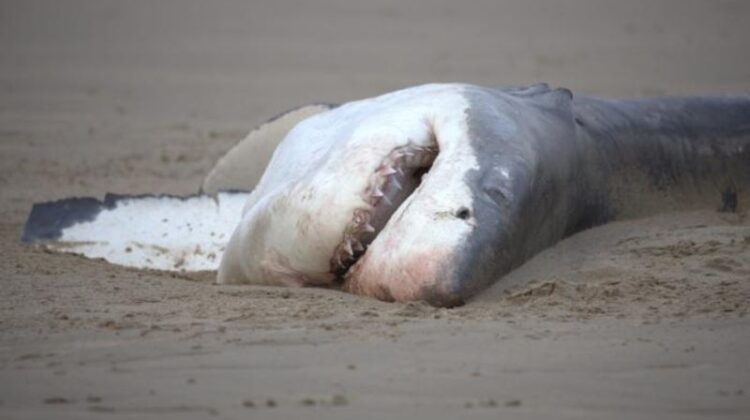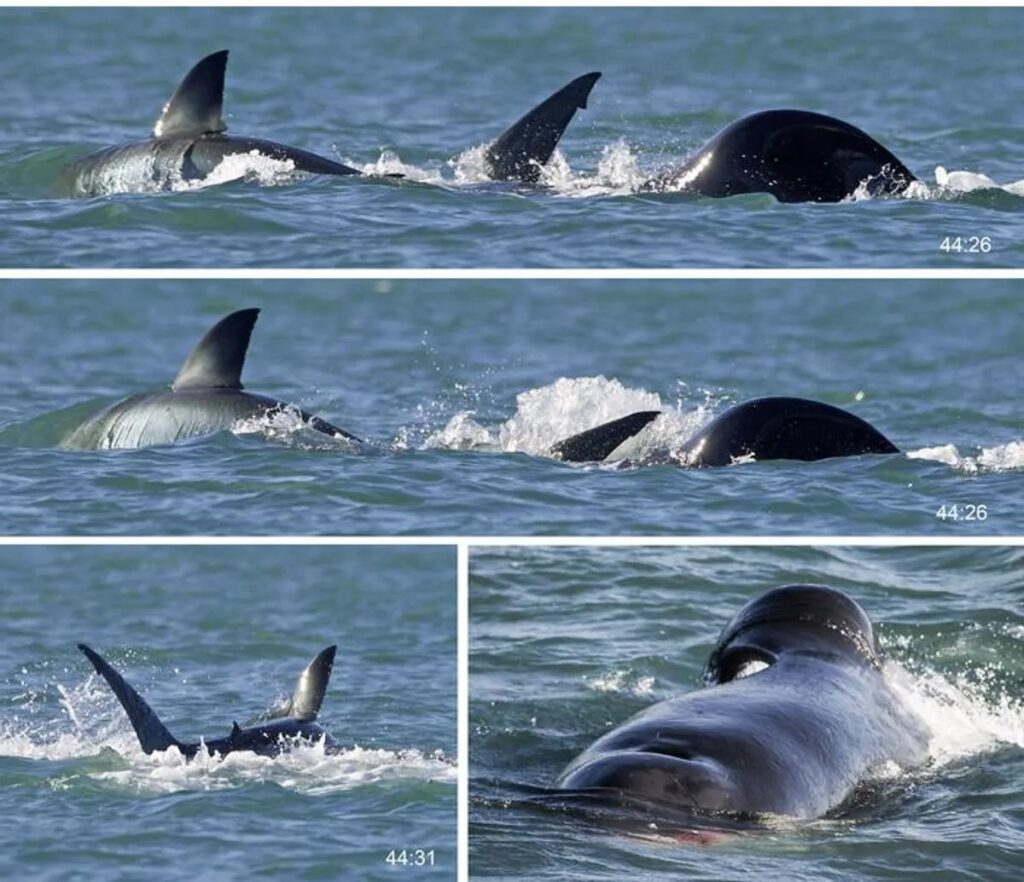
For the first time ever, a single orca has been seen hunting a great white shark.
In one of the most extraordinary predation events ever witnessed, an orca has been observed annihilating a great white shark in less than two minutes. Previously, killer whales had been seen hunting the large sharks in packs, yet this is the first known instance of a single orca taking down a great white with no assistance from other hunting partners.
“The astonishing predation, off the coast of Mossel Bay, South Africa, represents unprecedented behavior underscoring the exceptional proficiency of the killer whale,” said Dr Alison Towner from Rhodes University in a statement. Describing the event in a new study, Towner and colleagues explain that the act was carried out by a male orca called Starboard, who first showed up in the region in 2015 and has been part of a white shark-killing squad for several years.

Since 2017, Starboard and his hunting partner Port (named because their dorsal fins are bent in opposite directions) have been repeatedly observed collaboratively preying on sharks. During these attacks, the pair work together – sometimes with up to four additional orcas – to surround and trap great white sharks before extracting and consuming their fat-rich livers.
According to the study authors, these hunts often last for up to two hours and have led to many shark species avoiding the area around Mossel Bay – a region that was previously famous for its large population of great whites.
Starboard’s solo attack was witnessed at 3pm local time on June 18, 2023, when a juvenile white shark measuring around 2.5 meters (8.2 feet) in length appeared at the surface with the orca in close pursuit. “[Starboard] then gripped the left pectoral fin of the shark and thrust forward with the shark several times before eventually eviscerating it,” write the study authors.
“Remarkably, the period from seizing the shark by the pectoral fin to eviscerating it lasted less than two minutes,” they continue, adding that Starboard was spotted shortly afterwards with “a bloody piece of peach-coloured liver in [his] mouth.” Interestingly, the researchers say that Port remained about 100 meters (328 feet) away throughout the entire incident, leaving Starboard to hunt and devour the shark alone.
“These are groundbreaking insights into the predatory behavior of this species, and our findings significantly contribute to the global understanding of killer whale predation dynamics, enhancing knowledge of marine ecosystems and predator-prey relationships,” says Towner.
In this instance, the young shark probably weighed around 100 kilograms (220 pounds), although the researchers suspect that a fully-grown great white – which can measure 6.5 meters (21.3 feet) in length and weigh 2.5 tonnes (2.76 tons) – may be too big for a single orca, and would therefore require “cooperative hunting”.

Image credit: Christiaan Stopforth, Drone Fanatics SA / Arianna Di Bari, Shark Studies Center Scientific Institute
The following day, researchers reported “the distinct smell of shark liver” in the air and a suspicious oily slick on the surface of the ocean, all of which pointed towards another kill. Sure enough, the carcass of a second shark, which also had its liver missing, was found washed up on the shore nearby, although it’s unclear if this was the victim of a single orca or a group of hunters.
“The study raises critical questions about the impact of killer whale predation on shark populations in South Africa,” says Towner. At present, researchers are uncertain as to why orcas have taken such a fancy to shark liver in the last few years, though Towner warns that “the displacement of various shark species due to killer whale presence may have implications for mesopredator release and potential trophic changes in the marine ecosystem.”

Leave a Reply